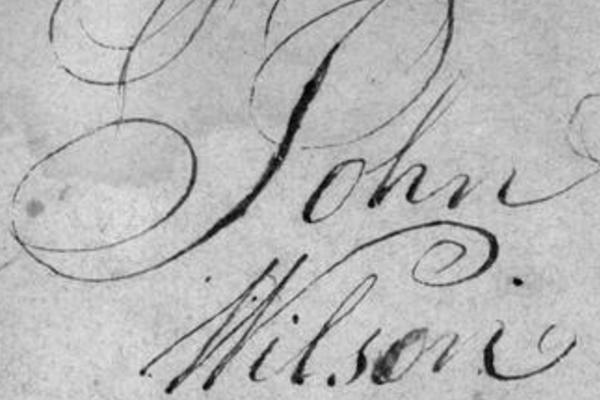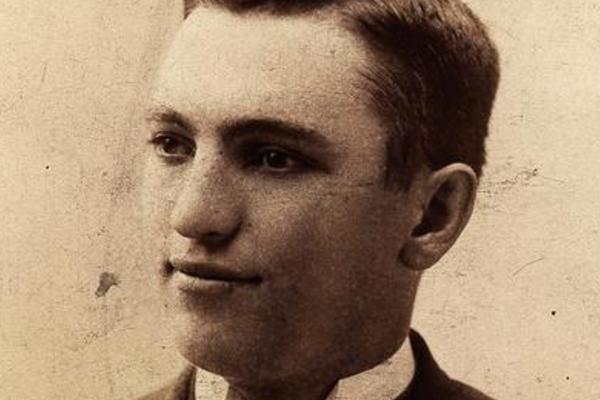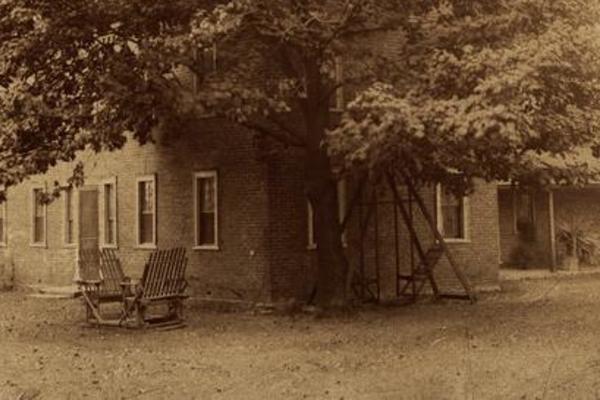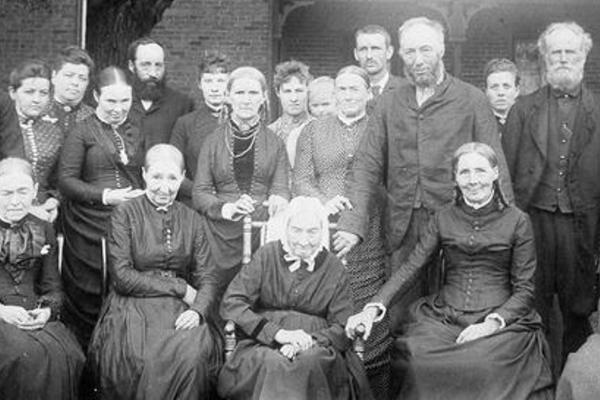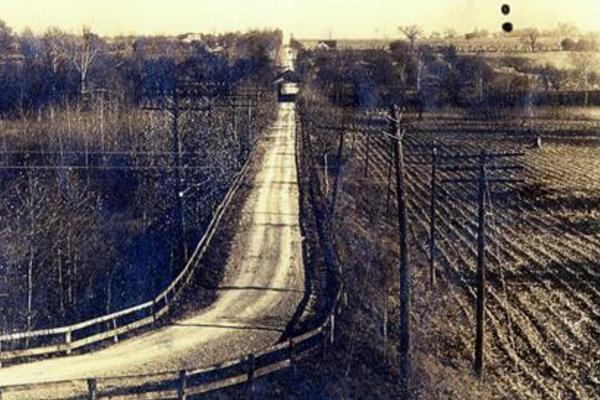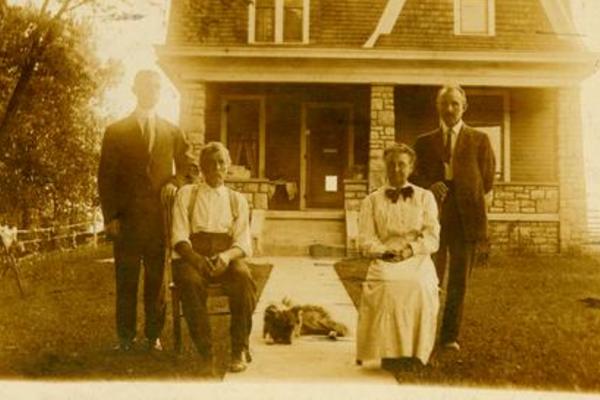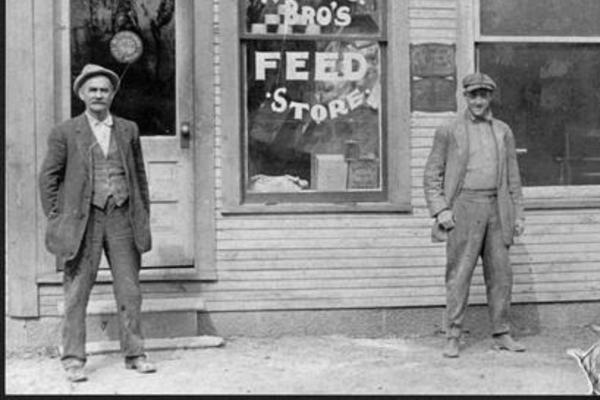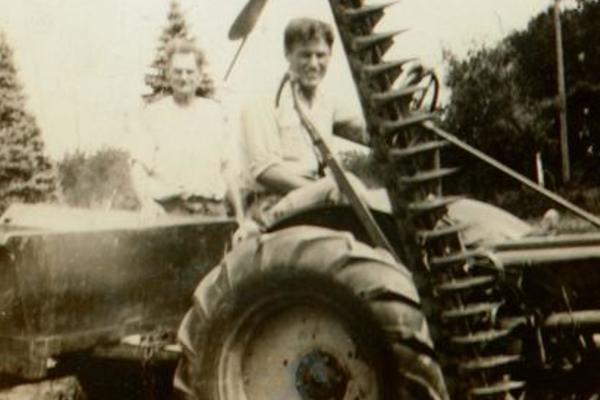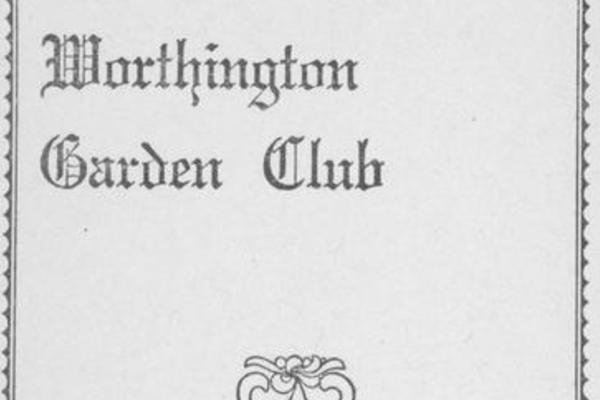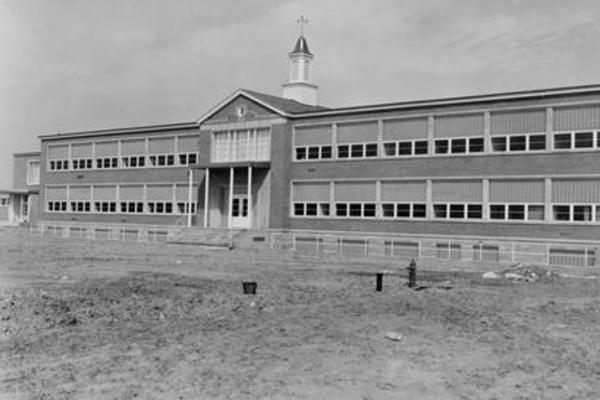Monday,
May 1, 2017
9:30am
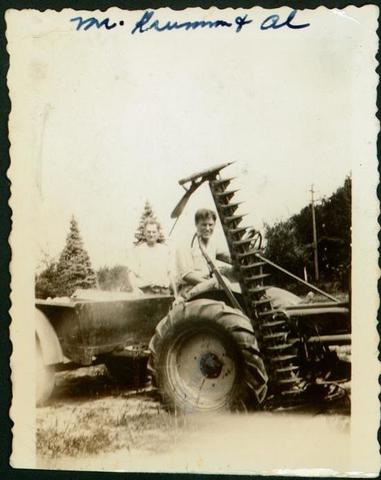
Today, the Worthington area is surrounded by miles of residential subdivisions, housing and strip malls, but for most of its history, it consisted of woodlands and farm fields. Our May exhibit takes you on a farm tour from Worthington's past.
The Jeffers Hopewell mound on Plesenton Drive reminds us that prehistoric Indians had a complex culture here for hundreds of years before the arrival of European-Americans. Like their ancestors, the Wyandot people who lived in the area in the early 1800s when the first settlers from New England arrived, would have planted corn, beans, squash and pumpkins to supplement the game they hunted.
The Worthington/Sharon Township area was first surveyed in 1797 by Israel Ludlow. His notes described "excellent farming land well timbered with oak, black ash, walnut, beech, and sugar trees." In an 1816 guide for new settlers, James Kilbourn's nephew writes, “The land is generally level, but rather low and wet, than otherwise, yet most exuberantly fertile, and is exceedingly well calculated for grazing farms and raising stock.” It is only in the past half-century that the balance of farmland to urban settlement has shifted in the Worthington area. When the Scioto Company purchasers first divided the land into town and farm lots in 1803, the village only comprised approximately 130 acres, leaving about 7,670 acres for farming.
Most of the early village settlers needed to practice a trade, such as carpentry or tinsmithing, as well as farming in order to sustain their families. Even civic institutions such as the school and the church were provided with 80-acre farm lots to partially fund their operations. The school farm was located on the site of present-day Thomas Worthington High School. St. John's Episcopal Church owned the farmland where the Kilbourne Village housing estate is now located on the west side of Dublin-Granville Road between Evening Street and the Olentangy River. The Methodist Children's Home had its own farm, purchased from the Pinney family in 1912.
By contrast with today's farm monoculture, where only one or two crops are planted over many acres, early 19th century farms aimed for self-sufficiency. Local farmers often raised cows, pigs, horses and oxen. They would have grown a variety of crops such as corn, wheat, rye, oats, hay, flax, potatoes, apples and peaches to feed their families and sell the surplus.
There was always plenty of hardship for area farmers. Working on his uncle's farm for room and board in the 1820s, Worthington Academy student Salmon P. Chase complained that "I was simply a farmer’s boy doing all kinds of farmer’s boy’s work…I used to count the days and I wished I could get home, or go somewhere else and get a living by work.” Chase went on to become Secretary of the Treasury (1861–64) during President Lincoln's wartime Cabinet and Chief Justice of the United States (1864–73).
Farmers continued to struggle with economic hardship into the 20th century. According to a report published in the "Worthington News" in 1933, Ohio’s grain crop of 1931-- the largest ever-- sold for the lowest price since recordkeeping began. Ohio wheat, which sold for $1.02 per bushel in 1880, sold for only $0.50 per bushel in 1931. We have an exceptionally good pictorial record of rural central Ohio during this decade, thanks to the social realist painter Ben Shahn, who spent the summer of 1938 photographing the region for the Farm Security Administration. His photos of Worthington and surrounding farms can be found at the Library of Congress.
By 1920, the village of Worthington had achieved some major milestones: water, sewer and electric service had all been installed and, by the time of the 1929 stock market crash, it was beginning to be considered a pleasant retreat from city life and an easy commute to Columbus via the Columbus, Delaware & Marion interurban rail line. In combination with low agricultural prices, which only rebounded with World War II, and the increasing ease of commuting to Columbus, Worthington area farms began to be sold off to residential home developers with increasing frequency.
What we would now call urban farming got its start during World War II, when food shortages became opportunities for area families to grow their own vegetables and fruit in Victory Garden allotments. Four areas of the village were designated as Community Victory Gardens, including the church farm on Evening Street (now Kilbourne Village), the Covert property on West South Street, the Ed Herrick tract on East North Street and the Medick Estates Inc. tract on Morning Street. Lots were rented at a cost of $4, which included plowing and harrowing. It was estimated by Community Victory Garden chairman, Mr. E.S. Halley, that two out of five families would need to grow food if all persons in the community were to have enough to eat.
Perhaps the last vestige of farming in Worthington is our weekly, Saturday morning farmers market, which began in 1987. The market encourages independent, small-scale farmers and artisanal food producers to sell their products directly to Worthington-area consumers.

